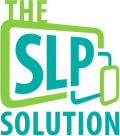Fluency and Stuttering Therapy Guides
Step-by-Step plans for a variety of fluency/stuttering skills – Plus, wording for your goals!
What is Task Analysis?
Task analysis is the process of breaking a larger skill down into smaller, sequential steps. With each step that the child masters, he grows closer to being able to perform the full skill independently. Tasks analysis is an evidence-based instructional method which has been found especially effective for children who do not respond to regular instruction, which makes it perfect for the children on our case loads.
While the process of task analysis has been studied and backed by research, there aren’t always agreed-upon ways to break down a skill. Every SLP may have a slightly different method of breaking down skills into step-by-step plans. What’s important is that the steps are achievable and sequential so that the child sees incremental success on the way to learning a new skill.
The following therapy guides represent our task analysis for each skill. You’ll also find sample text for your goals.
Looking for Therapy Activities? Worksheets? Troubleshooting? More Help?
We have more where this came from! Get access to the full SLP Solution Curriculum when you become a member!
Membership Includes…
- Therapy ideas for each step below
- No Prep Worksheets and Therapy Kits
- Troubleshooting Advice
- Access to our staff and community for asking questions
- Monthly webinars for continuing education
Our Step-By-Step Guides:
How to Use:
Click the skill that you’d like to expand. You’ll find our task analysis of the steps you can follow in therapy to teach that skill. You’ll also find sample text to include in your goal writing. To get detailed therapy activities for each step below, please join our membership program to get access to the full SLP Solution Curriculum.
- Provide Strategies to Parents: SLP will provide parent education about stuttering and provide a list of strategies that the parents can try at home to reduce stuttering.
- Use Indirect Strategies in Therapy Sessions: SLP will use the strategies directly during sessions with the child.
- Identify Fast/Slow and Bumpy/Smooth in the Therapist’s Speech: Student will identify whether the therapist’s speech is fast or slow and bumpy or smooth.
- Bring Awareness to One’s Stuttering: Student will identify which types of dysfluencies he most often has and identify a list of possible triggers.
- Discover Emotions about Stuttering: During guided question and answer sessions with the therapist, Student will identify negative emotions and beliefs that are impacting his/her stuttering.
- Reducing Negative Emotions about Stuttering: Student will use a variety of activities to help reduce negative emotions about stuttering.
- Learn About the Speech Mechanism: Student will be able to describe the basic structures and functions of the speech mechanism system, including how the breath works together with the larynx and articulators to produce speech.
- Practice Fluency-Shaping Techniques in Structured Tasks: Student will demonstrate use of the fluency-shaping techniques in a controlled, structured task, such as when speaking simple sentences or reading a paragraph in the therapy setting.
- Practice Fluency-Shaping Techniques in Conversation in Therapy Room: Student will demonstrate use of the fluency-shaping techniques in conversational speech during conversation with the speech therapist in the therapy setting.
- Generalize Fluency-Shaping Techniques in Other Environments: Student will demonstrate use of the fluency-shaping techniques in natural conversations in a variety of other settings.
Fluency-Shaping Strategies Include:
- Slow, stretchy speech
- Continuous Phonation
- Prolongation
- Easy Onset
- Light Articulatory Touch
- Learn About the Speech Mechanism: Student will be able to describe the basic structures and functions of the speech mechanism system, including how the breath works together with the larynx and articulators to produce speech.
- Practice Stuttering Modification Techniques in Structured Tasks: Student will demonstrate use of the stuttering modification techniques in a controlled, structured task, such as when speaking simple sentences or reading a paragraph in the therapy setting.
- Practice Stuttering Modification Techniques in Conversation in Therapy Room: Student will demonstrate use of the stuttering modification techniques in conversational speech during conversation with the speech therapist in the therapy setting.
- Generalize Stuttering Modification Techniques in Other Environments: Student will demonstrate use of the stuttering modification techniques in natural conversations in a variety of other settings.
Stuttering Modification Techniques Include:
- Preparatory set (before stutter)
- Pull-out (during stutter)
- Cancellation (after a stutter)
What Do I Do in Therapy?
If you’re still not sure what to do in therapy, don’t worry! We have more resources for you! The SLP Solution Curriculum contains detailed descriptions of what you can do in therapy for each of the steps listed above. Join today to get all of the therapy ideas, worksheets, and support!

